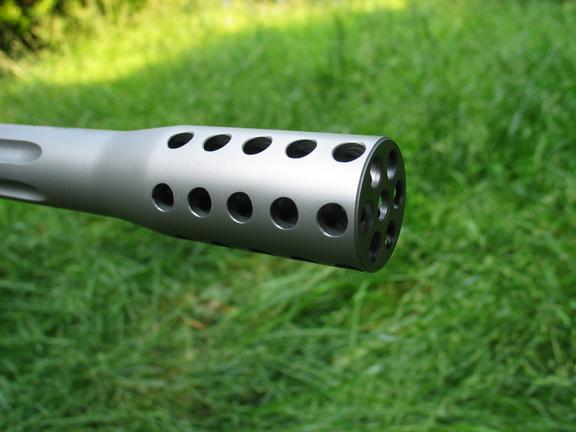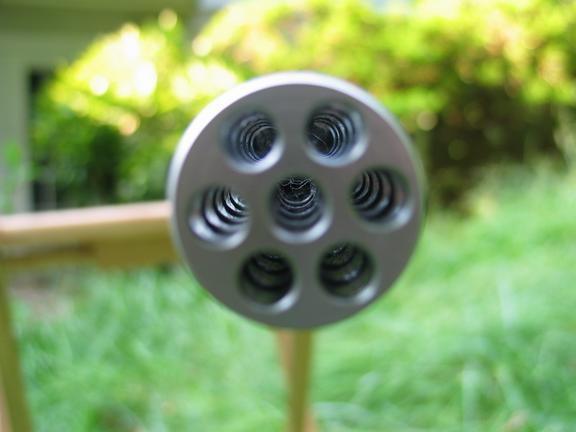OK, one more thought experiment, and then I promise not to write any more in my apparently vain attempt to keep Newton (Isaac, not Charles) from spinning in his grave (perhaps on frictionless bearings, in a vacuum).
Imagine a rifle with a barrel bent in a U-shape, with the muzzle facing back in the same direction as the shooter. In free recoil, which way will the rifle move after the bullet leaves the muzzle? Will the magnitude of the recoil be the same as, or different from, an otherwise identical rifle with a straight barrel? (Obviously the sign of the recoil momentum vector will be opposite.)
Now in our U-shaped barrel we will put a valve just before the U starts to turn. This magical valve will let the bullet out of the barrel, flying straight downrange, in the same direction and with the same velocity as a bullet from a normal barrel would. However, the magical valve prevents any propellant gas from escaping, and all of those gases (and their momentum) make the U-turn and point back at the shooter (parallel to the axis of the bullet's flight).
Is it possible for the bullet's momentum to be completely cancelled by the gas momentum, yielding a funny-looking, and very loud (for the shooter) recoilless rifle?
Is it possible for the magically-valved, U-shaped rifle to recoil (dare I say it -- rocket) AWAY from the shooter, producing "negative recoil," even though the bullet is speeding downrange?
A muzzle brake is the valve and the U-shaped barrel rolled into one fairly inefficient, but very useful, device. Just like a gimballed rocket nozzle a muzzle brake redirects the momentum of hot gas, producing thrust in the desired direction.
Sir Isaac, R.I.P.
Toby Bradshaw
baywingdb@comcast.net
HelLOOOO????
Toby, this is just silly......
You make statements like " (Obviously the sign of the recoil momentum vector will be opposite.)"
I mean, HOW does one argue with that??!!
Let's just START with this..... "obviously the sign of the recoil momentum vector WILL NOT be opposite."
The gases will still most certainly impinge upon the curved bore, slingshot A'gain.
The vector of force may well be FORCED into reverse/parallel by the fixed steel bore but the momentum vector most certainly will NOT "be reversed"......
dZEEPers!!!
al
If we can get past this then maybe we can find out how much recoil will be reduced by actually somehow EXHAUSTING the gases to the rear. NOT by sending them forward, turning them in a freakin' RACE for cryin' out loud! and then claiming victory........



